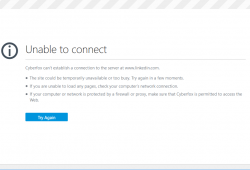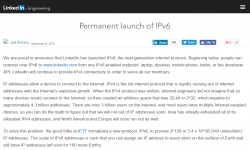Why is there no real commitment for IPv6?
Saturday, October 29. 2016
I've been an active IPv6-user for many many years. Of course my ISP doesn't offer a native IPv6, so I'm using a tunnel from SixXS. They have been providing such tunnels free-of-charge for years, and for that I thank them and the ISPs volunteering their capacity for us nerds to have decent IPv6-connectivity. SixXS got tired for IPv6 not getting any traction, the ISPs have almost zero commitment for allowing people to use real, native IPv6. SixXS has a campaign called "Call Your ISP for IPv6!", but I don't think that's going to make much of an impact. When any ISP is actually asked about their IPv6 support, they'll stall by "we'll announce it later" or "but we do support IPv6" (by some unusable mechanism).
When looking what's happening on the ISP-side, Telia (or Sonera, as we call it here in Finland) has enabled 6rd for their connections. It combines DHCPv4 by returning enough parameters for an IPv6 setup with a 64-bitmask to be done. It kinda works, but ... still not the real thing I'm after. Also Elisa and DNA, two big mobile telcos in Finland, started offering IPv6 (DNA, Elisa) for their customers, but ... I'm not going to change my home fiber for a mobile connection. So something is happening at the telco-scene. I'm just waiting my ISP (Elisa) to act on the wired side too.
The other side of the chicken-egg -problem are the services. There is no real commitment on their side either. For example Amazon AWS (a really huge infrastructure provider) really doesn't support IPv6, they have nice IPv6 support for Internet-facing load-balancers, their S3 storage and their content delivery net Cloudfront, to mention few. But when it comes to running a server instance with real native IPv6, no dice. So, you can market your service to be IPv6-ready, all the critical Internet-facing services really do support IPv6, but your infra runs on IPv4 private addresses. Not cool.
And when it comes to services, this is a typical scenario:

That's what's been happening for LinkedIn for I-don't-know-how long. At least this week.
Me being the nerd I am, some background investigation:
# telnet www.linkedin.com 80
Trying 2620:109:c007:102::5be1:f881...
telnet: connect to address 2620:109:c007:102::5be1:f881:
Connection timed out Trying 91.225.248.129...
Connected to www.linkedin.com.
Escape character is '^]'.
A classic. ![]()
Their IPv6 is down and they don't know about it. This is their level of commitment:

On September 2014, they announce to have done a "Permanent launch of IPv6". But none of them are using it themselves to realize it has been down for a week! The really scary thing is, that they cannot afford $10 a month for a Pingdom check. 
That's what I recommend for everybody to use for monitoring on-line services. Any reputable admin needs to know the second a service is out of reach by general public. IMHO that should include also admins at LinkedIn.
When it comes to lack of IPv6, I need to come clean. This blog isn't running on IPv6 either. Since most of you don't have it, it is impossible for you to know. My co-location host cannot offer me the IPv6, so no avail. ![]()
But why? Why is there no real commitment for IPv6? What's blocking all sensible people for going all-in IPv6? Everybody knows, that all possible IPv4 addresses were allocated by IANA to telcos and ISPs in January 2011. So, there is no more. Of course there are plenty of available addresses in RIRs to allocate for regional telcos, so we're not completely bankrupt with IPv4-addresses. But that day is eventually coming, it's just a waiting game. Notable efforts like World IPv6 Launch Day yield no mentionable results.
So what's holding us back? I don't know anything else except everybody going on the path-of-least-resistance. Since there are available IPv4-addresses, why risk a change. With change things can go broken or something may shift so that some people will lose some and others will win some. Not that much of a risk, if you ask me. But here we are, inching towards IPv6 very slowly. Speed it up, goddamnit!


GDR! on :
- A website advertises A and AAAA, but they only monitor availability IPv4. One day IPv6 goes down and never comes back. IPv6 enabled visitors think their ISP is shit because the site works on other providers.
- OVH offering /64 for dedicated servers so you can't really launch an IPv6-only container or a VPS without a lot of in-depth knowledge. I heard it's the same with most cheap providers. An /56 would solve that. Also, in OVH you can move IPv4s between servers but not IPv6, a big reason why I'm not hosting any websites or servers on v6.
- Incomplete software support. In 2017 you can still find a lot of IPv4-only utilities.
BTW. your atom feed is consistently returning 502 even when the rest of the site is working.
Jari Turkia on :
GDR! on :
geometry dash on :
Jari Turkia on :